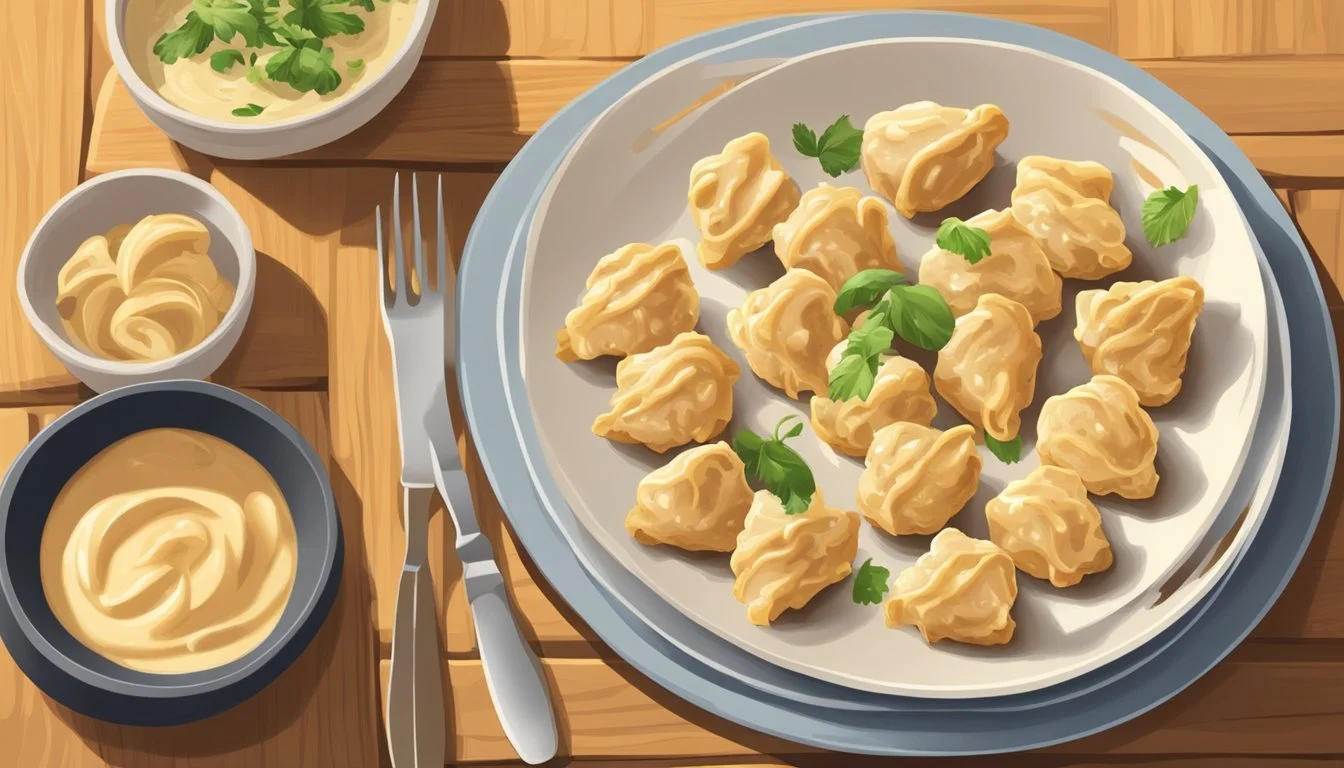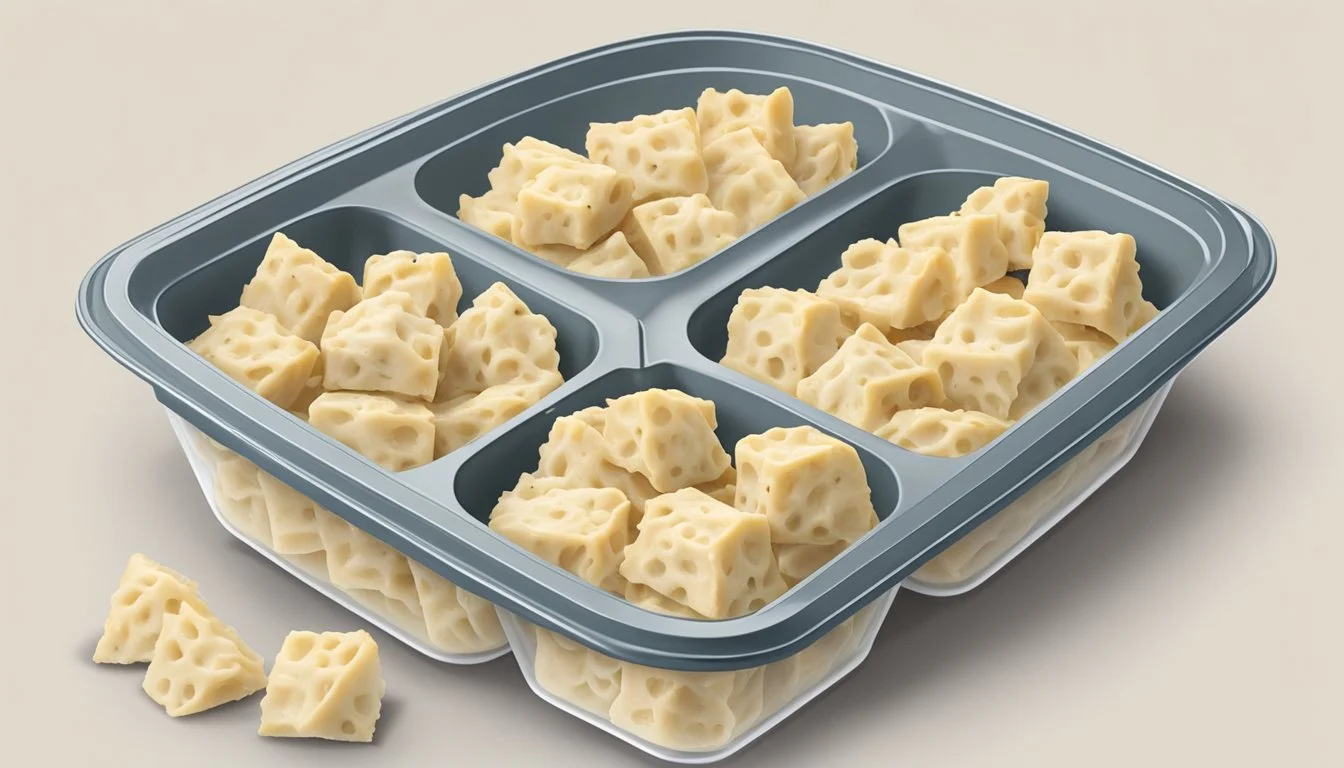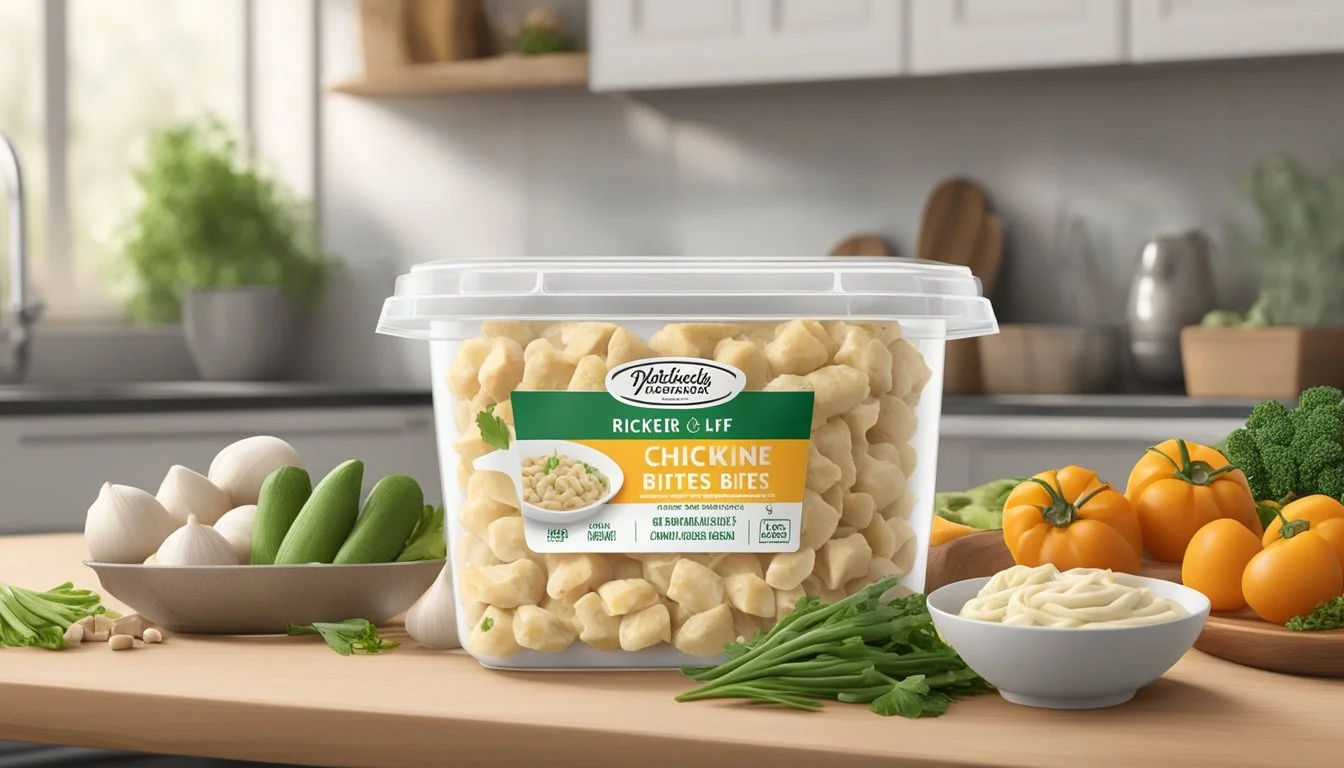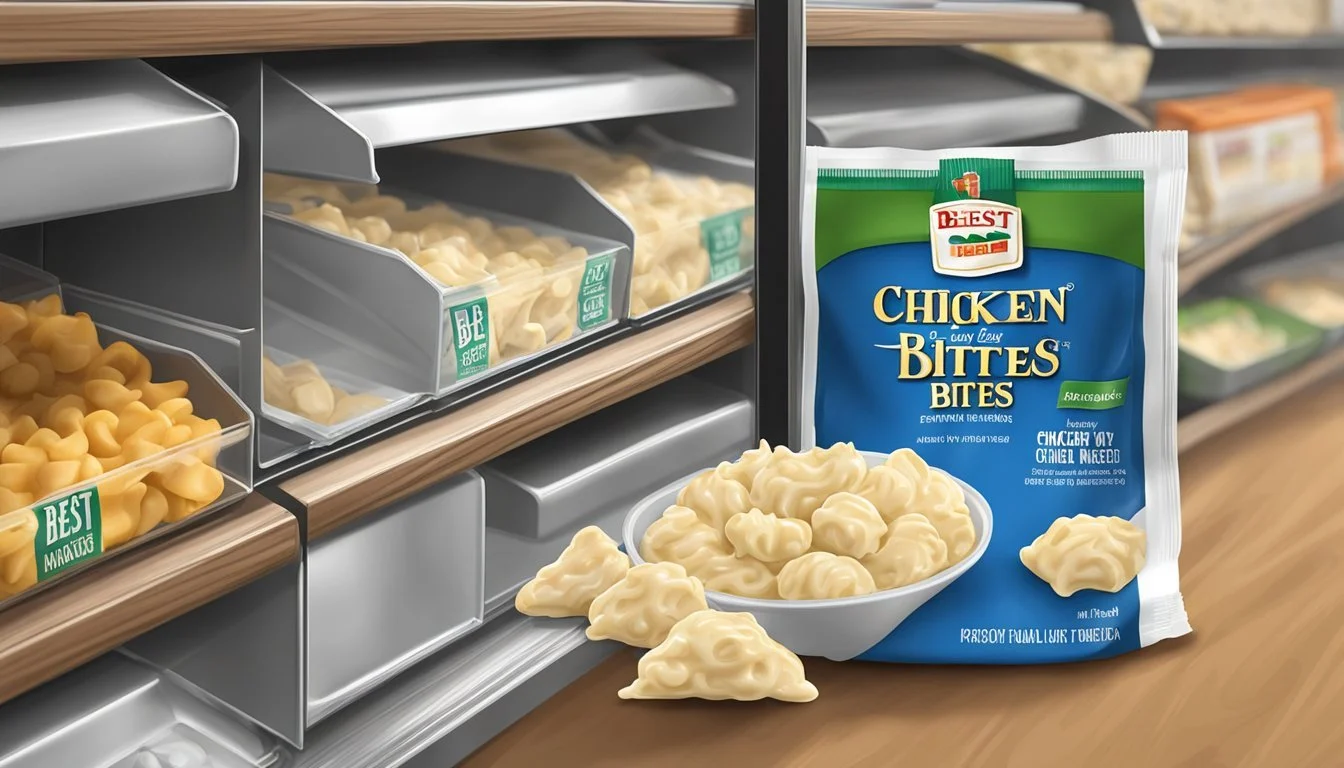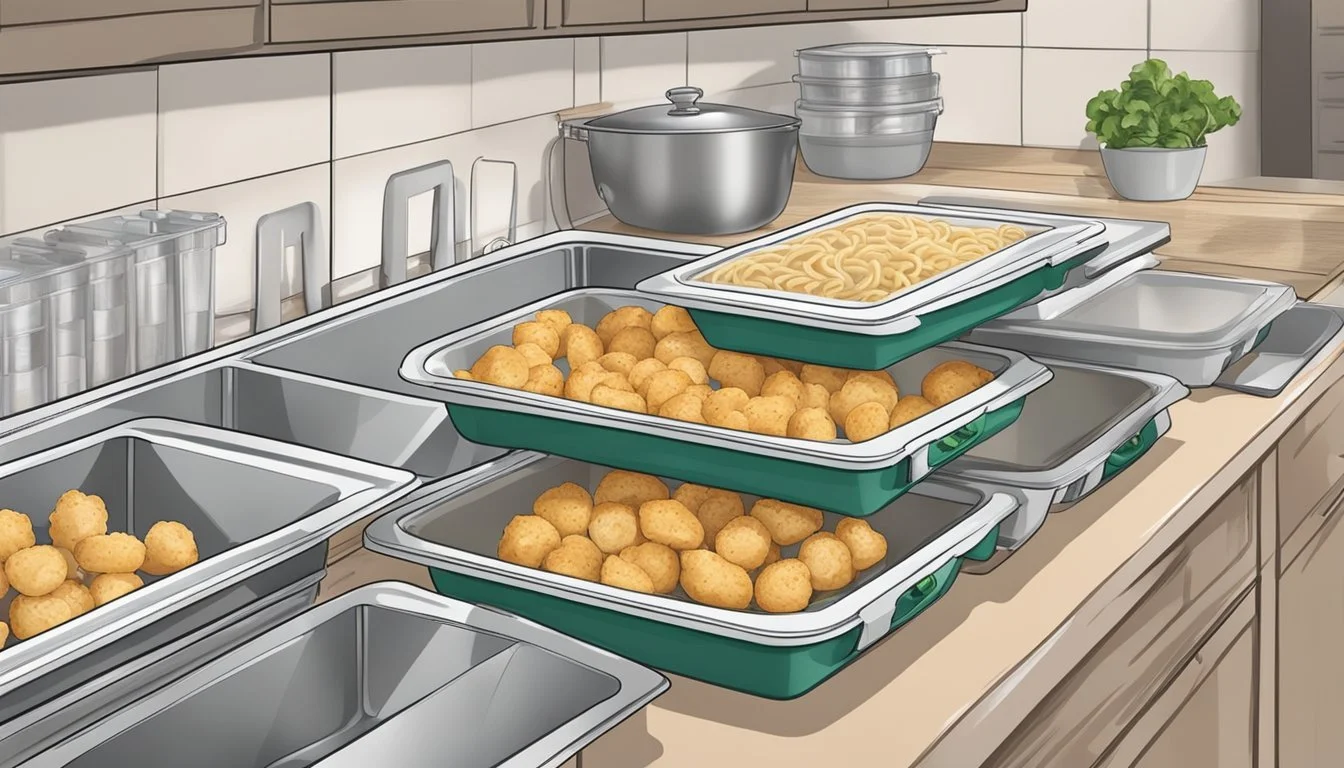How Long Do Chicken Alfredo Bites Last?
Shelf Life and Storage Tips
Chicken Alfredo Bites are a delicious and convenient meal option, perfect for satisfying those creamy, savory cravings. When it comes to storing these tasty bites, proper food safety is crucial to avoid any risk of food poisoning. Refrigerated Chicken Alfredo Bites can last for up to 3-4 days, while frozen bites can be kept for up to 2-3 months.
For those who enjoy meal prepping, extending the shelf life of Chicken Alfredo Bites involves a few simple steps. Ensure the bites are cooled completely before refrigerating to prevent bacterial growth, and always store them in airtight containers. If planning to freeze, transfer the bites to freezer-safe bags or containers, ensuring to remove any excess air.
Understanding how to properly store these flavorful bites means you can enjoy them without worry. By taking the necessary precautions, you can savor Chicken Alfredo Bites while keeping safety and freshness in mind.
Understanding Chicken Alfredo Bites
Chicken Alfredo bites combine tender chicken with creamy Alfredo sauce, offering a rich and flavorful dish. These bites are versatile and can feature various ingredients and nutritional benefits based on the recipe used.
Components and Texture
Chicken Alfredo bites usually consist of small pieces of chicken breasts, heavy cream, Parmesan cheese, and garlic. The chicken is often cooked until tender, then mixed with a creamy Alfredo sauce made from butter, heavy cream, Parmesan, and seasonings like salt and pepper.
The texture of Chicken Alfredo bites is both creamy and slightly chewy, thanks to the blend of tender chicken and the sauce's rich consistency. Some variations may include additional ingredients like vegetables or Italian seasoning for extra flavor and texture diversity.
Variations in Recipe
Various recipes for Chicken Alfredo bites exist, each with slight differences in ingredients and preparation methods. Common pasta choices include fettuccine and penne, both of which hold the rich Alfredo sauce well.
Some recipes might add vegetables such as spinach, broccoli, or bell peppers to the dish for added nutritional value and texture. Herbs like parsley and Italian seasoning can enhance the flavor profile. The choice of Parmesan cheese and whether to use heavy cream or a lighter alternative also influence the final taste and consistency.
Nutritional Considerations
The nutritional content of Chicken Alfredo bites can vary depending on the ingredients used. A typical serving is rich in calories due to the heavy cream and Parmesan cheese. Chicken Alfredo can also be high in sodium because of added salt and cheese.
To make a healthier version, one might use low-fat substitutes for heavy cream and reduce the amount of Parmesan. Adding more vegetables can increase the fiber content and reduce the calorie density. Despite these modifications, Chicken Alfredo remains a comfort food enjoyed by many for its rich and creamy taste.
Proper Storage Guidelines
Proper storage of chicken alfredo bites is crucial to extend their shelf life and ensure food safety. This can be achieved through careful refrigerator storage, freezing techniques, and effective airtight methods.
Refrigerator Storage
Chicken alfredo bites should be promptly stored in the refrigerator to maintain their freshness. Once cooked, let them cool to room temperature. This helps in preventing condensation which can promote bacterial growth when stored.
Use airtight containers or plastic wraps to store the bites. These measures prevent moisture loss and minimize exposure to air.
Tips:
Store at a temperature below 40°F (4°C).
Use within 3-4 days to ensure optimal taste.
Immediately refrigerate if reheated to maintain freshness.
Freezer Advisory
Freezing chicken alfredo bites extends their shelf life significantly. For best results, portion the bites into freezer-safe containers or plastic bags. This method helps in easy thawing and reduces waste.
Steps:
Allow bites to cool completely.
Place bites in airtight, freezer-safe packaging.
Label with date of freezing.
Chicken alfredo bites can be stored in the freezer for up to 2-3 months. Be aware that while freezing preserves safety, quality may decrease over time.
Airtight Methodology
Using airtight storage solutions is essential for maintaining the quality of chicken alfredo bites. Storing bites in airtight containers or wrapping them tightly in aluminum foil or plastic wrap prevents freezer burn and contamination.
Recommendations:
Ensure no excess air remains in storage containers.
For added protection, wrap bites before placing them in the container.
For short-term storage, plastic wraps are convenient; for long-term, vacuum-sealed bags are ideal.
Avoid leaving chicken alfredo bites at room temperature for prolonged periods. Ensuring proper packaging and refrigeration helps in preserving the bites and extends their edible period without compromising safety.
Maintenance of Quality and Freshness
Proper handling, looking for spoilage signs, and preventing contamination are crucial for maintaining the quality and freshness of chicken alfredo bites.
Handling Procedures
To ensure chicken alfredo bites remain fresh, they must be cooked to an internal temperature of 165°F (74°C) to kill harmful bacteria. Once cooked, they should be promptly stored in an airtight container.
Refrigerate within two hours of cooking to prevent spoilage. In the refrigerator, the bites can last up to 3-4 days.
For longer storage, freeze the bites in a freezer-safe container or bag, ensuring minimal air exposure. Frozen chicken alfredo bites can maintain quality for up to 2-3 months.
Signs of Spoilage
Identifying spoilage is essential to avoid foodborne illnesses. Key signs include:
Odors: Spoiled chicken alfredo will have a sour or rancid smell.
Texture: A slimy texture is a significant indicator of spoilage.
Visual Cues: Discoloration and mold growth are clear signs that the bites are no longer safe to eat.
Always discard any chicken alfredo bites that exhibit these signs to prevent health risks.
Preventing Contamination
Preventing contamination starts with proper handling. Use clean utensils and surfaces to avoid cross-contamination.
Store chicken alfredo bites in airtight containers to keep bacteria and other contaminants out. Label containers with dates to ensure they are consumed within their safe period.
Regularly clean the refrigerator and freezer to keep the storage areas free from bacteria and mold. Maintain a refrigerator temperature below 40°F (4°C) and a freezer temperature at 0°F (-18°C) for optimal freshness and safety.
By following these practices, the quality and freshness of chicken alfredo bites can be maximized, ensuring they remain safe and delightful to consume.
Reheating and Consumption
Reheating chicken Alfredo bites properly is essential for maintaining their flavor and texture while ensuring food safety. Proper techniques can help avoid foodborne illnesses and ensure a delicious meal.
Reheating Techniques
When reheating chicken Alfredo bites, use an oven, microwave, or stovetop, depending on the available equipment. Oven reheating involves placing the bites in an oven-safe dish, covering with foil, and heating at 350°F (175°C) for 15-20 minutes.
Alternatively, the microwave option requires placing the bites in a microwave-safe container, covering loosely, and heating on medium power in one-minute intervals. Stirring occasionally helps them heat evenly. For those preferring the stove, add a bit of water or Alfredo sauce to a pan, cover, and heat on low to medium.
Refrigerated leftovers should be consumed within 3-4 days, while frozen ones can last up to three months.
Dangers of Improper Reheating
Improper reheating can lead to uneven temperatures, which may result in the risk of foodborne illnesses. Food that is not heated to the correct temperature can harbor harmful bacteria. Ensure that chicken Alfredo bites are heated thoroughly to an internal temperature of 165°F (74°C) to prevent bacterial growth.
Avoiding shortcuts, such as not covering the dish or using high temperatures, can help in achieving consistent reheating. Bacteria like Salmonella and E. coli can thrive if food isn’t reheated properly. Thawing frozen bites in the refrigerator, not on the countertop, reduces the risk of contaminants.
Best Practices for Servings
When serving reheated chicken Alfredo bites, use clean utensils and an airtight container to store leftovers promptly. Serve smaller portions to minimize the time food spends at room temperature.
If using a microwave, stir halfway through to ensure even heating. Oven and stove methods may take longer but are useful for even temperature distribution. Label containers with dates to track the freshness of leftovers. Proper storage and reheating practices are crucial for food safety and minimizing the risk of foodborne illnesses.
Extending Shelf Life
To extend the shelf life of chicken Alfredo bites, focus on effective freezing techniques, proper use of preservation accessories, and assessing viability for long-term storage.
Freezing Tips and Tactics
Freezing is an excellent method for extending the shelf life of cooked chicken dishes like chicken Alfredo bites. To preserve their quality, first allow the bites to cool to room temperature. Place them in an airtight container or a freezer bag. If using a freezer bag, remove as much air as possible to prevent freezer burn.
Label each container with the date of freezing. Store at a temperature of 0°F (-18°C) or lower. When ready to consume, thaw them in the refrigerator overnight or use the microwave's defrost setting for a quicker option. Proper freezing can keep chicken Alfredo bites safe and tasty for up to 2-3 months.
Utilizing Preservation Accessories
Using preservation accessories effectively can significantly extend shelf life. Vacuum sealers are particularly useful for removing air from storage bags, which helps keep perishable food items fresh longer. If a vacuum sealer is not available, airtight containers or heavy-duty freezer bags can also help reduce exposure to air and moisture.
Line containers with wax paper or aluminum foil to create an additional barrier against moisture. For added protection, consider using silica gel packs that are food safe, which can help absorb any moisture present. These measures help in preserving the quality and flavor of chicken Alfredo bites.
Assessing Viability for Long-Term Storage
Before freezing or storing, assess whether the cooked chicken Alfredo bites are viable for long-term storage. Inspect for any signs of spoilage like off odors, discoloration, or mold. Discard any bites that do not meet freshness standards to avoid contaminating other stored food.
It is also crucial to track storage times. Use a rotation system, consuming older batches first to maintain freshness and prevent waste. Regularly check the condition of the storage environment, ensuring the freezer maintains a consistent temperature below 0°F (-18°C) to safely store chicken Alfredo bites for extended periods.
Serving Suggestions and Pairings
Chicken Alfredo bites are delicious and versatile. Pair them with the right sides and enhancements to elevate the meal experience.
Complementary Sides and Salads
Pairing Chicken Alfredo bites with the right sides can significantly enhance the meal. A simple side salad with fresh greens, cucumbers, and a light vinaigrette provides a refreshing contrast to the rich, creamy bites. Homemade garlic bread is another popular choice; its crispy texture is perfect for soaking up any leftover sauce.
Roasted asparagus adds a slight crunch and a hint of smokiness, making it an excellent companion. Shrimp Alfredo, when served alongside chicken bites, introduces a delightful mix of flavors and textures, turning a simple meal into a family favorite.
Creative Recipe Enhancements
Get creative with your Chicken Alfredo bites by adding various ingredients for an extra layer of flavor. Sprinkle bacon bits over the bites for a savory touch. Incorporate sautéed mushrooms or spinach into the bites before baking to add depth and nutrition.
For a twist, stuff the bites with cheese or serve with a drizzle of pesto sauce. Creating an assemble-your-own platter with these enhancements allows guests to customize their bites, leading to a more interactive and enjoyable dining experience.
Health and Safety Considerations
When storing and consuming chicken alfredo bites, several health and safety considerations are critical. Ensuring proper handling and storage practices can significantly reduce the risk of foodborne illnesses.
Refrigerate chicken alfredo bites promptly after cooking. They should be stored in an airtight container and kept at a temperature of 40°F (4°C) or below.
Bacteria Prevention:
The internal temperature of refrigerated chicken should not exceed 40°F (4°C) to minimize bacterial growth. Pathogenic bacteria thrive at temperatures between 40°F (4°C) and 140°F (60°C).
Shelf Life:
Refrigerated chicken alfredo bites are generally safe to eat for up to 3-4 days.
Spoilage Indicators:
Check for signs of spoilage, including a sour or rancid smell, discoloration, mold growth, separation, or a slimy texture.
Freezing Tips:
For prolonged storage, freeze chicken alfredo bites. They can last in the freezer for up to 2-3 months. Ensure they are stored in airtight, freezer-safe containers or bags to prevent freezer burn.
Reheating Guidelines:
When reheating, ensure that the internal temperature of chicken alfredo bites reaches 165°F (74°C). This temperature is vital for killing harmful bacteria that may have developed.
Avoid Cross-Contamination:
Always use clean utensils and surfaces when handling cooked chicken alfredo bites. This practice helps to avoid cross-contamination with raw foods or other contaminants.
Discard When in Doubt:
If there is any uncertainty regarding the freshness or safety of chicken alfredo bites, it is safer to discard them. consuming spoiled chicken can lead to severe food poisoning.

